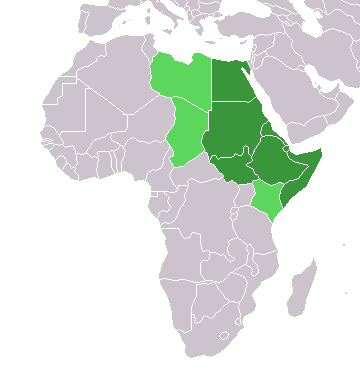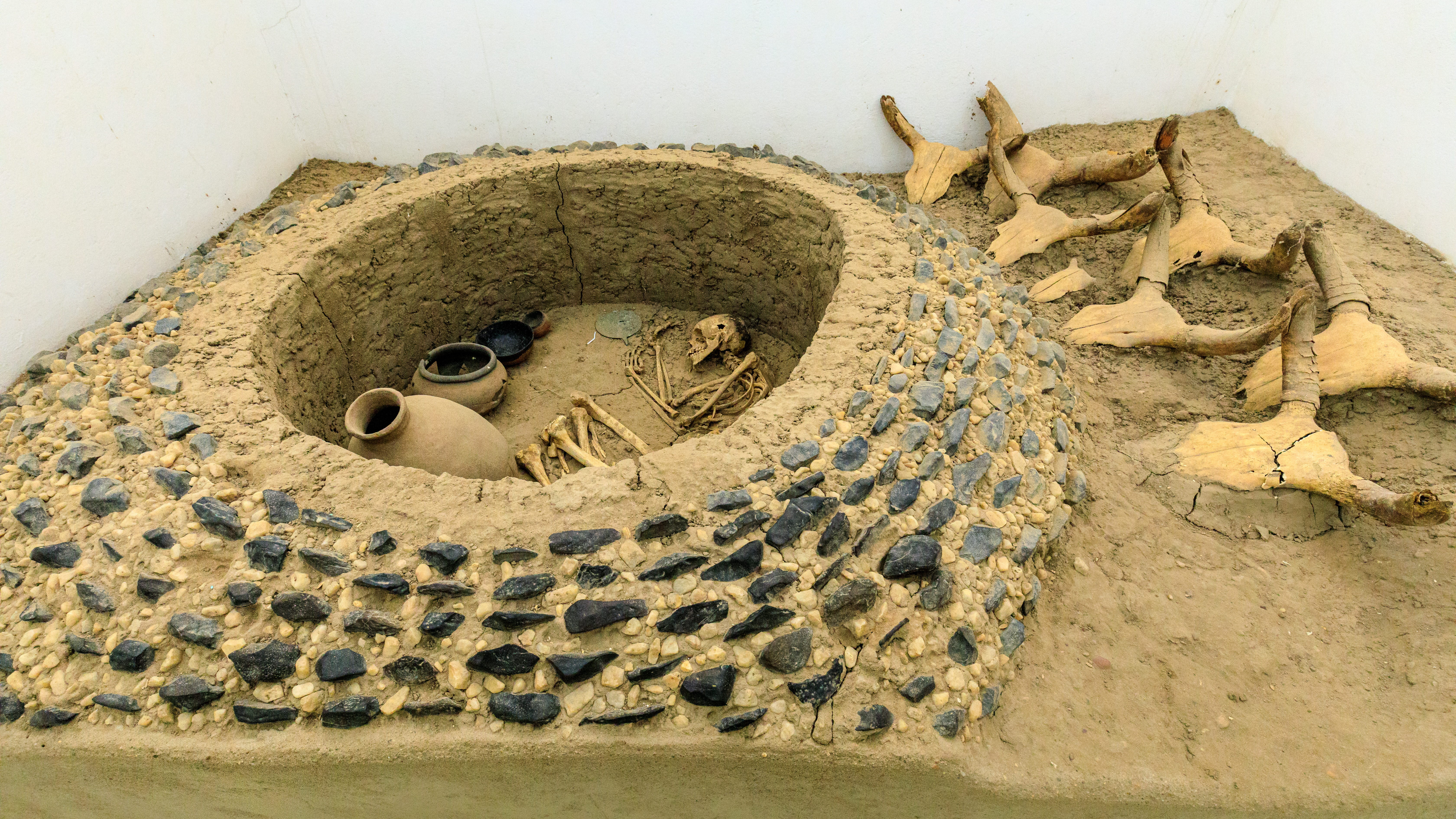|
A-group
The A-Group culture was an ancient culture that flourished between the First and Second Cataracts of the Nile in Nubia. It lasted from 3800 BC to 3100 BC. Overview In 1907, the Egyptologist George A. Reisner first discovered artifacts belonging to the A-Group culture. Early hubs of this civilization included Kubaniyya in the north and Buhen in the south, with Aswan, Sayala, Toshka and Qustul in between. The A-Group population have been described as ethnically “very similar” to the pre-dynastic Egyptians in physical characteristics. The A-Group makers maintained commercial ties with the Ancient Egyptians. They traded commodities like incense, ebony and ivory, which were gathered from the southern riverine area. They also bartered carnelian from the Western Desert as well as gold mined from the Eastern Desert in exchange for Egyptian products, olive oil and other items from the Mediterranean basin. Excavation Findings The A-Group makers left behind a number of cemeter ... [...More Info...] [...Related Items...] OR: [Wikipedia] [Google] [Baidu] |
Nubia
Nubia () (Nobiin: Nobīn, ) is a region along the Nile river encompassing the area between the first cataract of the Nile (just south of Aswan in southern Egypt) and the confluence of the Blue and White Niles (in Khartoum in central Sudan), or more strictly, Al Dabbah. It was the seat of one of the earliest civilizations of ancient Africa, the Kerma culture, which lasted from around 2500 BC until its conquest by the New Kingdom of Egypt under Pharaoh Thutmose I around 1500 BC, whose heirs ruled most of Nubia for the next 400 years. Nubia was home to several empires, most prominently the Kingdom of Kush, which conquered Egypt in the eighth century BC during the reign of Piye and ruled the country as its 25th Dynasty (to be replaced a century later by the native Egyptian 26th Dynasty). From the 3rd century BC to 3rd century AD, northern Nubia would be invaded and annexed to Egypt, ruled by the Greeks and Romans. This territory would be known in the Greco-Roman world as Dodekasc ... [...More Info...] [...Related Items...] OR: [Wikipedia] [Google] [Baidu] |
Qustul
Qustul is an archaeological cemetery located on the eastern bank of the Nile in Lower Nubia, just opposite of Ballana near the Sudan frontier. The site has archaeological records from the A-Group culture, the New Kingdom of Egypt and the X-Group culture. A-Group records Three significant A-group culture cemeteries of the times of the First Dynasty of Egypt have been excavated, which is located in present-day Egypt what was once Lower Nubia at least 5800 years ago. The most important one, cemetery L, revealed wealthy burials of rulers. In one of these graves was found an incense burner believed by Bruce Williams of the Oriental Institute at the University of Chicago depicting images assigned to the Pharaoh including a shape of the White Crown of Upper Egypt. Bruce Williams argued in 1987 that his discovery of the Qutsul incense burner advanced no claim of a Nubian origin or genesis for the pharaonic monarchy but that the archaeological data shows Nubian linkages and influence ... [...More Info...] [...Related Items...] OR: [Wikipedia] [Google] [Baidu] |
Kingdom Of Kush
The Kingdom of Kush (; Egyptian language, Egyptian: 𓎡𓄿𓈙𓈉 ''kꜣš'', Akkadian language, Assyrian: ''Kûsi'', in LXX grc, Κυς and Κυσι ; cop, ''Ecōš''; he, כּוּשׁ ''Kūš'') was an ancient kingdom in Nubia, centered along the Nile Valley in what is now northern Sudan and southern Egypt. The region of Nubia was an early cradle of civilization, producing several complex societies that engaged in trade and industry. The city-state of Kerma emerged as the dominant political force between 2450 and 1450 BC, controlling the Nile Valley between the first and fourth Cataracts of the Nile, cataracts, an area as large as Egypt. The Egyptians were the first to identify Kerma as "Kush" and over the next several centuries the two civilizations engaged in intermittent warfare, trade, and cultural exchange. Much of Nubia came under Egyptian rule during the New Kingdom of Egypt, New Kingdom period (1550–1070 BC). Following Egypt's disintegration amid the Lat ... [...More Info...] [...Related Items...] OR: [Wikipedia] [Google] [Baidu] |
Qustul Incense Burner, Qustal, Nubia, Cemetery L, Tomb 24, A-Group, 3200-3000 BC, Limestone - Oriental Institute Museum, University Of Chicago - DSC08007
Qustul is an archaeological cemetery located on the eastern bank of the Nile in Lower Nubia, just opposite of Ballana near the Sudan frontier. The site has archaeological records from the A-Group culture, the New Kingdom of Egypt and the X-Group culture. A-Group records Three significant A-group culture cemeteries of the times of the First Dynasty of Egypt have been excavated, which is located in present-day Egypt what was once Lower Nubia at least 5800 years ago. The most important one, cemetery L, revealed wealthy burials of rulers. In one of these graves was found an incense burner believed by Bruce Williams of the Oriental Institute at the University of Chicago depicting images assigned to the Pharaoh including a shape of the White Crown of Upper Egypt. Bruce Williams argued in 1987 that his discovery of the Qutsul incense burner advanced no claim of a Nubian origin or genesis for the pharaonic monarchy but that the archaeological data shows Nubian linkages and influence ... [...More Info...] [...Related Items...] OR: [Wikipedia] [Google] [Baidu] |
Upper Nubia
Upper Nubia is the southernmost part of Nubia, upstream on the Nile from Lower Nubia. It is so called because the Nile flows north, so it is further upstream and of higher elevation in relation to Lower Nubia. The extension of ''Upper Nubia'' is rather ill-defined and depends on the researchers’ approach. Geographical approach Geographically speaking ''Upper Nubia'' designs the area between the Second and the Sixth cataracts of the Nile. Occasionally the term ''Middle Nubia'' is used to design the area between the Second and the Third cataract; in this case ''Upper Nubia'' begins at the Third cataract going upstream. Physiographic subdivisions of Upper Nubia alongside the Nile cataracts: Political approach Politically speaking ''Upper Nubia'' falls in present northern and central Sudan stretching from the Egyptian border south to present-day Khartoum at the confluence of White Nile and Blue Nile.Barbara Ann Kipfer; Upper Nubia in: Encyclopedic Dictionary of Archaeology; 2000; ... [...More Info...] [...Related Items...] OR: [Wikipedia] [Google] [Baidu] |
Upper Egypt
Upper Egypt ( ar, صعيد مصر ', shortened to , , locally: ; ) is the southern portion of Egypt and is composed of the lands on both sides of the Nile that extend upriver from Lower Egypt in the north to Nubia in the south. In ancient Egypt, Upper Egypt was known as ''tꜣ šmꜣw'', literally "the Land of Reeds" or "the Sedgeland". It is believed to have been united by the rulers of the supposed Thinite Confederacy who absorbed their rival city states during the Naqada III period (c. 3200–3000 BC), and its subsequent unification with Lower Egypt ushered in the Early Dynastic period. Upper and Lower Egypt became intertwined in the symbolism of pharaonic sovereignty such as the Pschent double crown. Upper Egypt remained as a historical region even after the classical period. Geography Upper Egypt is between the Cataracts of the Nile beyond modern-day Aswan, downriver (northward) to the area of El-Ayait, which places modern-day Cairo in Lower Egypt. The northern (d ... [...More Info...] [...Related Items...] OR: [Wikipedia] [Google] [Baidu] |
Northeast Africa
Northeast Africa, or ''Northeastern Africa'' or Northern East Africa as it was known in the past, is a geographic regional term used to refer to the countries of Africa situated in and around the Red Sea. The region is intermediate between North Africa and East Africa, and mainly encompasses the Horn of Africa (Ethiopia, Eritrea, Somalia, and Djibouti) and the Sudans and as well as Egypt and Libya. Sometimes, its borders are stretched to either include Kenya like the NFD region or Eastern Chad. The region has a very long history of habitation with fossil finds from the early hominids to modern human and is one of the most genetically and linguistically diverse regions of the world, being the home to many civilizations and located on an important trade route that connects multiple continents.Project MUSE. (2020). Northeast African Studies'. Retrieved March 22, 2020. "This distinguished journal is devoted to the scholarly analysis of Ethiopia, Eritrea, Djibouti, Somalia, and Sudan, a ... [...More Info...] [...Related Items...] OR: [Wikipedia] [Google] [Baidu] |
Nile Valley
The Nile, , Bohairic , lg, Kiira , Nobiin: Áman Dawū is a major north-flowing river in northeastern Africa. It flows into the Mediterranean Sea. The Nile is the longest river in Africa and has historically been considered the longest river in the world, though this has been contested by research suggesting that the Amazon River is slightly longer.Amazon Longer Than Nile River, Scientists Say Of the world's major rivers, the Nile is one of the smallest, as measured by annual flow in cubic metres of water. About long, its covers eleven countries: the |
Kerma Culture
The Kerma culture or Kerma kingdom was an early civilization centered in Kerma, Sudan. It flourished from around 2500 BC to 1500 BC in ancient Nubia. The Kerma culture was based in the southern part of Nubia, or "Upper Nubia" (in parts of present-day northern and central Sudan), and later extended its reach northward into Lower Nubia and the border of Egypt. The polity seems to have been one of a number of Nile Valley states during the Middle Kingdom of Egypt. In the Kingdom of Kerma's latest phase, lasting from about 1700 to 1500 BC, it absorbed the Sudanese kingdom of Sai and became a sizable, populous empire rivaling Egypt. Around 1500 BC, it was absorbed into the New Kingdom of Egypt, but rebellions continued for centuries. By the eleventh century BC, the more-Egyptianized Kingdom of Kush emerged, possibly from Kerma, and regained the region's independence from Egypt. Site The primary site of Kerma that forms the heart of the Kingdom of Kerma includes both an extensive town ... [...More Info...] [...Related Items...] OR: [Wikipedia] [Google] [Baidu] |
Jebel Sheikh Suleiman
Jabal, Jabel, Jebel or Jibal may refer to: People * Jabal (name), a male Arabic given name * Jabal (Bible), mentioned in the Hebrew Bible Places In Arabic, ''jabal'' or ''jebel'' (spelling variants of the same word) means 'mountain'. * Dzhebel, a town in Bulgaria * Jabal Amman, part of Amman, Jordan * Jabel, a German municipality * Jabal, Amreli, a village in Gujarat, India * Jabal Rural District, in Iran * Jebel, Timiș, a commune in Timiș County, Romania * Jebel, Turkmenistan, a town * Jibal or al-Jabal, a late 1st-millennium-CE West-Asian realm Other uses * Djebel : ''For mountains or other uses, see: Jabal.'' Djebel (1937–1958) was a French Thoroughbred racehorse, who won 15 of 22 races during 1939–1942 including the Prix d'Essai, 2000 Guineas and Prix de l'Arc de Triomphe. He was later a leading s ... (1937–1958), a racehorse See also * * * * * * Jubal (other) {{disambiguation ... [...More Info...] [...Related Items...] OR: [Wikipedia] [Google] [Baidu] |
X-Group Culture
The X-Group Culture was an ancient civilization that existed from ca. 300 CE to ca. 600 CE. It was centered in Nubia stretching from the Dodekaschoinos in the north to Delgo, Sudan, Delgo in the south. George A. Reisner coined the term ''X-Group Culture'' for lack of a more exact historical definition. This anonymous type of terminology has been replaced by the term Ballana culture due to the increase of knowledge and new findings in Qustul and Ballana as proposed by Bruce Trigger.Bruce Trigger, History and Settlement in Lower Nubia. New Haven: Yale University Publications in Anthropology, 1965. References {{Reflist History of Nubia African civilizations Nubia ... [...More Info...] [...Related Items...] OR: [Wikipedia] [Google] [Baidu] |








